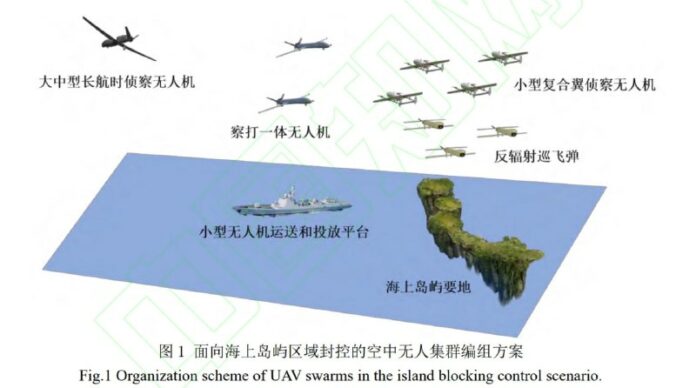China’s People’s Liberation Army (PLA) has detailed a simulation involving drones to counter the United States’ “Hellscape” plan for Taiwan. The study suggests that China has the capability to impose and maintain a blockade on an island using drones alone.
In the simulation outlined in the paper, the objective was to form a blockade and control an island similar in shape to Taiwan’s terrain. The PLA employed four types of drones in this combat mission. Large and medium-sized drones with reconnaissance-and-attack capabilities were launched from mainland Chinese military bases, while small composite-wing reconnaissance drones were deployed from PLA naval vessels.
Interestingly, the study found that deploying more drones did not necessarily lead to better results. Once the scale and diversity of drone formations reached a certain threshold within a combat grid area, they could effectively control the island and its surrounding waters, suppressing the island’s armed forces and thwarting external aid.
On the other hand, the United States has also been developing a drone-only strategy for military intervention in Taiwan, known as the “Hellscape” plan. Drones play a key role in America’s latest plan for potential military action over the island.
The simulation conducted by the PLA sheds light on the increasing importance of drones in modern warfare. Drones offer a unique advantage in terms of reconnaissance, attack capabilities, and maintaining control over strategic areas. Both China and the United States are investing in drone technology to enhance their military capabilities and strategies.
For more information on this topic, you can read the full article in the South China Morning Post. The simulation conducted by the PLA highlights the evolving nature of military tactics and the role of drones in shaping future conflicts involving China, the United States, and Taiwan.

